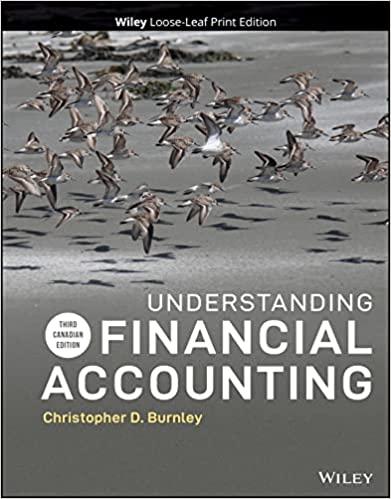Question
Answer each independent question, (a) through (e), below. a. Project A costs $5,000 and will generate annual after-tax net cash inflows of $1,800 for 5
Answer each independent question, (a) through (e), below.
a. Project A costs $5,000 and will generate annual after-tax net cash inflows of $1,800 for 5 years. What is the payback period for this investment under the assumption that the cash inflows occur evenly throughout the year? (Round your answer to 2 decimal places.)
b. Project B costs $5,000 and will generate after-tax cash inflows of $500 in year 1; $1,200 in year 2; $2,000 in year 3; $2,500 in year 4; and $2,000 in year 5. What is the payback period (in years) for this investment assuming that the cash inflows occur evenly throughout the year? (Round your answer to 2 decimal places.)
c. Project C costs $5,000 and will generate net cash inflows of $2,500 before taxes each year for 5 years. The firm uses straight-line depreciation with no salvage value and is subject to a 25% tax rate. What is the payback period under the assumption that all cash inflows occur evenly throughout the year? (Round your answer to 2 decimal places.)
d. Project D costs $5,000 and will generate sales of $4,000 each year for 5 years. The cash expenditures will be $1,500 per year. The firm uses straight-line depreciation with an estimated salvage value of $500 and has a tax rate of 25%.
(1) What is the accounting (book) rate of return based on the original investment? (Round your answer to 2 decimal places.)
(2) What is the book rate of return based on the average book value? (Round your answer to 2 decimal places.)
Use the built-in NPV function in Excel to calculate the amounts for projects A through D. (Round your answers to the nearest whole dollar amount.)
e1. What is the NPV of project A? Assume that the firm requires a minimum after-tax return of 8% on investment.
e2. What is the NPV of project B? Assume that the firm requires a minimum after-tax return of 8% on investment.
e3. What is the NPV of project C? Assume that the firm requires a minimum after-tax return of 8% on investment.
e4. What is the NPV of project D? Assume that the firm requires a minimum after-tax return of 8% on investment.
Step by Step Solution
There are 3 Steps involved in it
Step: 1

Get Instant Access to Expert-Tailored Solutions
See step-by-step solutions with expert insights and AI powered tools for academic success
Step: 2

Step: 3

Ace Your Homework with AI
Get the answers you need in no time with our AI-driven, step-by-step assistance
Get Started


